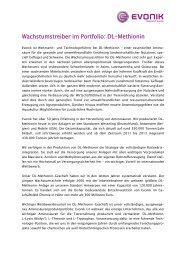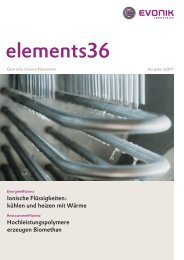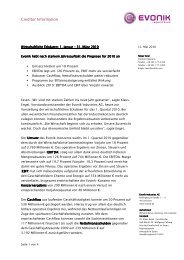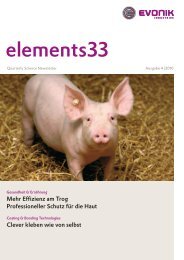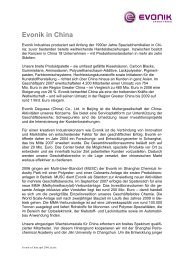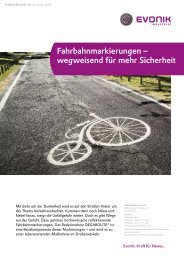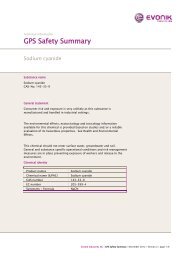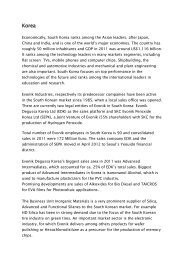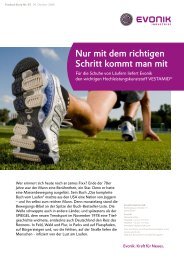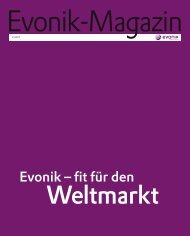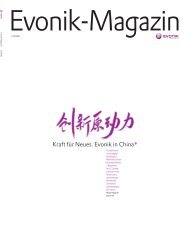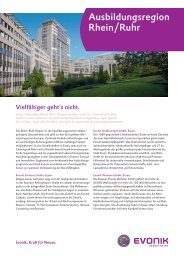Evonik Industries AG
Evonik Industries AG
Evonik Industries AG
You also want an ePaper? Increase the reach of your titles
YUMPU automatically turns print PDFs into web optimized ePapers that Google loves.
7 SEPTEMBER 21, 2010<br />
GLOBAL CORPORATE FINANCE<br />
Raw material costs represent more than 40% of the division’s sales. In 2009, EI benefitted from the<br />
significant decrease in raw material costs which only partly had to be passed on to the customers (sales<br />
price -6%); During H1, the increase in raw material costs (compared to H1 2009) could be<br />
successfully passed on to the customers (sales price +7%)<br />
Energy and real estate businesses offer some level of earnings diversification but have lower, or more volatile,<br />
returns on capital employed<br />
The earnings diversification stemming from EI’s energy and real estate businesses, accounting for 20%<br />
and 3% of group revenues, respectively, is only valid to a certain extent. The group’s energy division is<br />
focused on power generation and has no retail integration. Moody’s notes that most of EI’s power<br />
generation is sold under long-term contracts to other utilities or industrial customers, which means<br />
that it is a more stable business and is relatively less exposed to normal economic cycles. The real estate<br />
business offers very stable earnings and operating cash flows but its contribution to the group’s overall<br />
earnings is relatively limited, with only 9% of group EBITDA generated from this business.<br />
Given the above, EI’s strategy to focus its efforts and resources on its chemicals franchise in future is<br />
sensible, in Moody’s view. This view is supported by our analysis of the group’s returns on capital<br />
employed (ROCE). As illustrated in Figure 5, below, the chemicals division generated ROCE well in<br />
excess of that of the real estate business over the past four years. In addition, ROCE at the group’s<br />
energy business has proven much more volatile than that at the chemicals division.<br />
FIGURE 5<br />
Return on Capital employed by division<br />
ROCE 2006 2007 2008 2009<br />
Chemicals 8.5% 10.1% 9.9% 10.3%<br />
Energy 13.8% 15.3% 13.2% 9.7%<br />
Real Estate 6.6% 8.3% 9.2% 7.3%<br />
The group generates around 61% of sales and has more than 80% of its assets (see Figure 6) in its<br />
traditional European markets. EI’s overweight position in the high-cost regions of Europe and North<br />
America is a disadvantage, particularly in certain sub-sectors of the chemicals industry, in which lowcost<br />
players based in China and India have exacerbated the competitiveness.<br />
FIGURE 6<br />
Geographical breakdown of sales and assets (FYE 2009)<br />
Sales<br />
Segment<br />
Assets<br />
Germany Europe excl. Germany North America Asia Central & South America Other<br />
0%<br />
Source: Company reports<br />
10% 20% 30% 40% 50% 60% 70% 80% 90% 100%<br />
ANALYSIS: EVONIK INDUSTRIES <strong>AG</strong>



